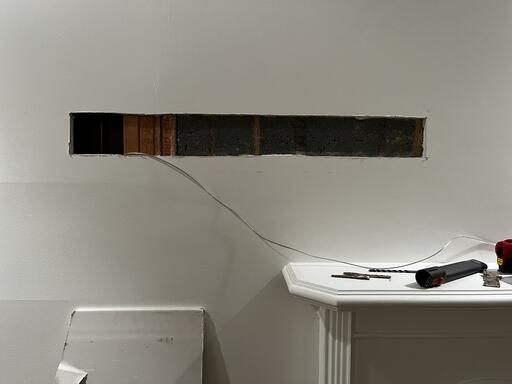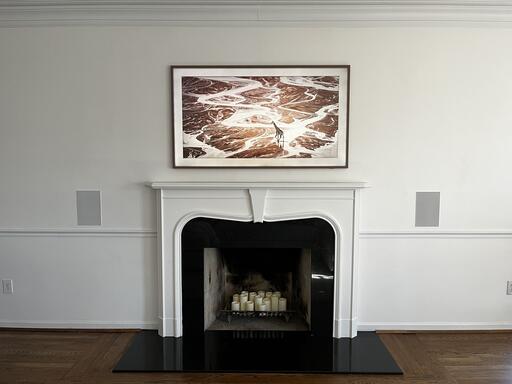How Wireshark Started
Every so often, a simple problem encountered in our daily lives sparks an idea that has the potential to transform the mundane into the extraordinary. This is the story of such an idea, born out of frustration and nurtured through persistence and innovation. It all began with the seemingly straightforward task of mounting a television on a wall above a fireplace—a task that soon unveiled a challenging predicament that would lead to a groundbreaking solution.
Upon moving into a new house, I was faced with the common desire to mount my television in a central location in the living room, above the fireplace. The aesthetic appeal of this setup is undeniable, offering a focal point for the room and an optimal viewing angle. However, the excitement quickly turned to puzzlement when I discovered that the drywall above the fireplace was glued directly to cinder block, leaving no space to route the television’s wires out of sight. The conventional method of running cables behind the drywall through studs was not an option, presenting a seemingly insurmountable obstacle.
For six months, this problem simmered in the back of my mind, leading to numerous brainstorming sessions and discussions with friends, family, and experts. One idea persistently resurfaced, albeit met with skepticism each time: routing the wire through a channel in the drywall itself. Traditional wisdom and prevailing practices suggested this was not a viable solution, and yet, the potential benefits were too compelling to ignore. The thought of an easier, cleaner installation process that could be accessible to anyone, regardless of their home’s construction, was incredibly appealing.
Driven by curiosity and a bit of stubbornness, I embarked on prototyping this idea in various forms. Despite initial doubts, the prototypes showed promise, and I became increasingly convinced that this unconventional approach was not only feasible but could significantly simplify the process of cable management. Finally, I took the plunge and attempted to implement this solution in my own home.
To my delight, the process was not just doable; it was, in fact, easier than any traditional method I had previously encountered. By creating a discreet channel within the drywall itself for the cables to pass through, the installation became straightforward, clean, and efficient. No longer was it necessary to navigate the complexities of wall studs or the limitations imposed by certain types of construction.
The success of this project led to the birth of Wireshark; aimed at revolutionizing the way we think about cable management. The solution, which initially seemed counterintuitive, has the potential to offer an accessible, user-friendly alternative to traditional methods. It caters not only to those faced with similar architectural constraints but also to anyone looking for a simpler way to run wires for televisions, home audio, ceiling light or even romex for electricity (more on that in a future post).
This journey from a personal challenge to a potential industry game-changer serves as a reminder that sometimes, the best ideas come from the most unexpected places. It underscores the value of questioning the status quo, exploring uncharted territories, and believing in the viability of your ideas, no matter how unconventional they may seem.
Stay tuned as we embark on this exciting venture, ready to redefine the standards of home setup and cable management. Join us in embracing the simplicity and efficiency of this innovative solution, born out of necessity and refined through persistence and creativity. The journey has just begun, and I hope you join along for the ride.

